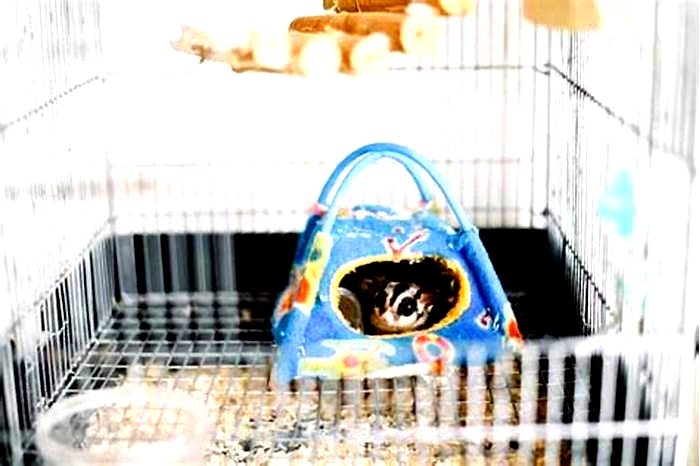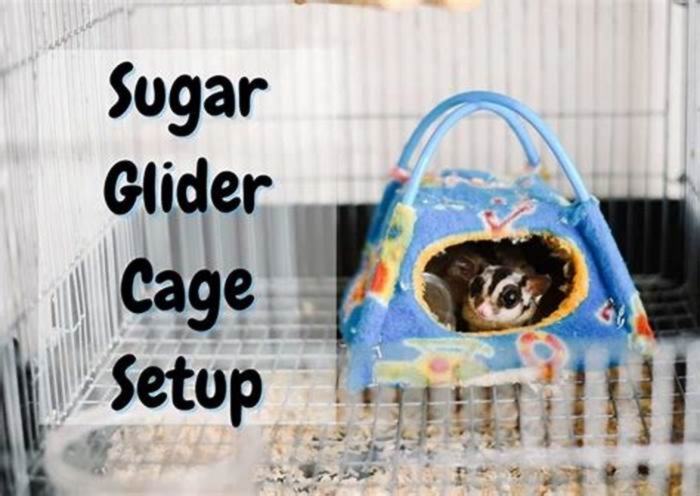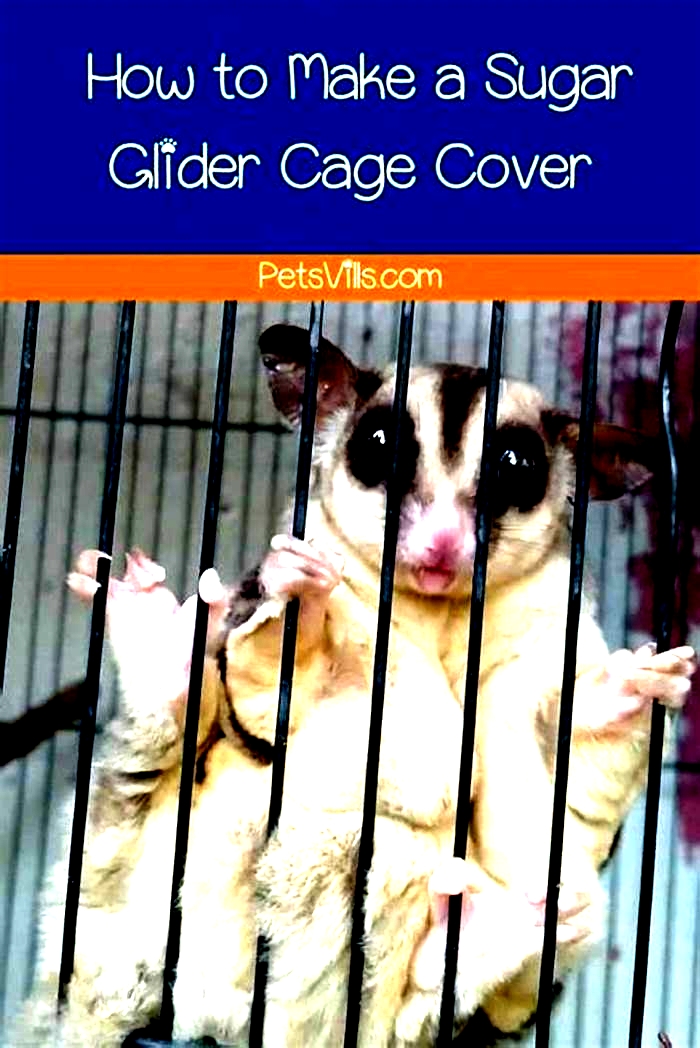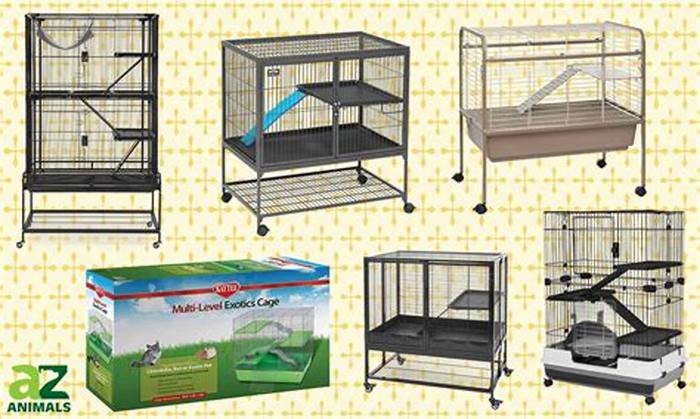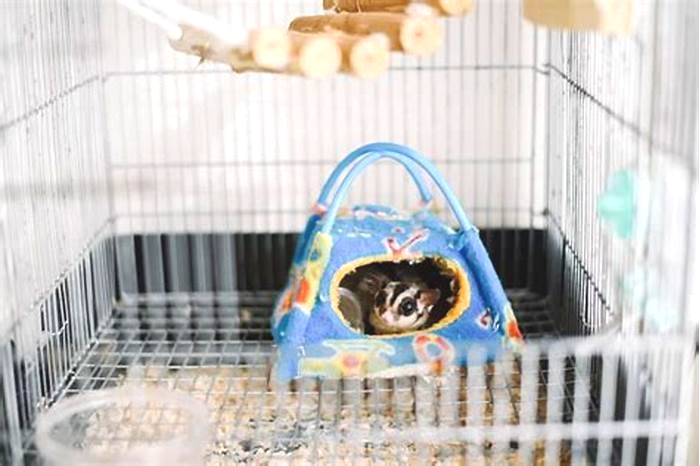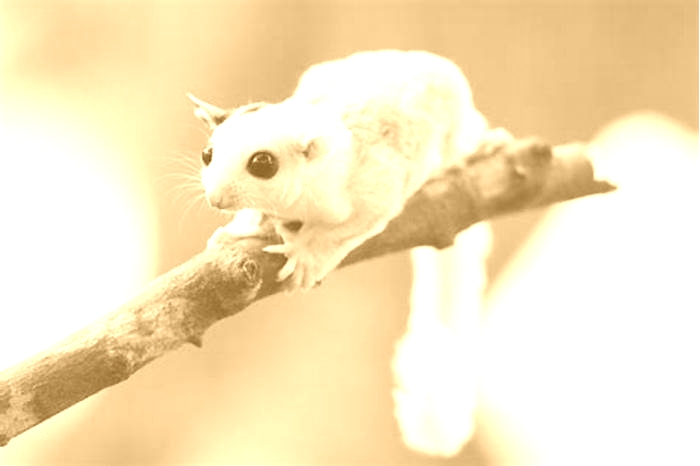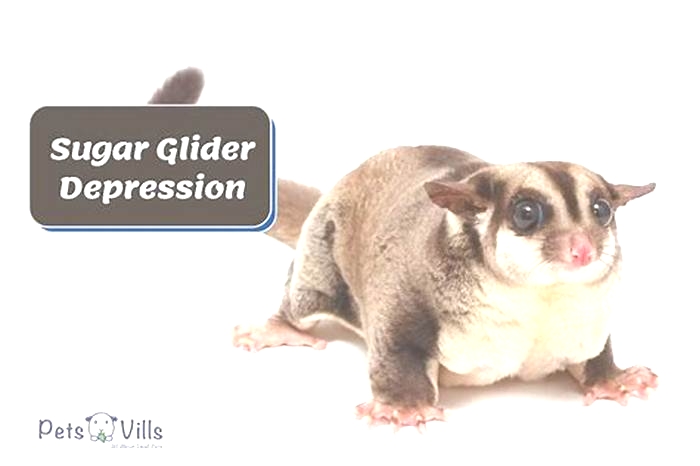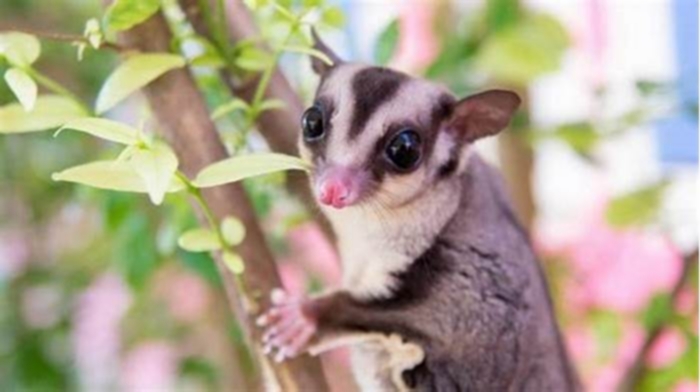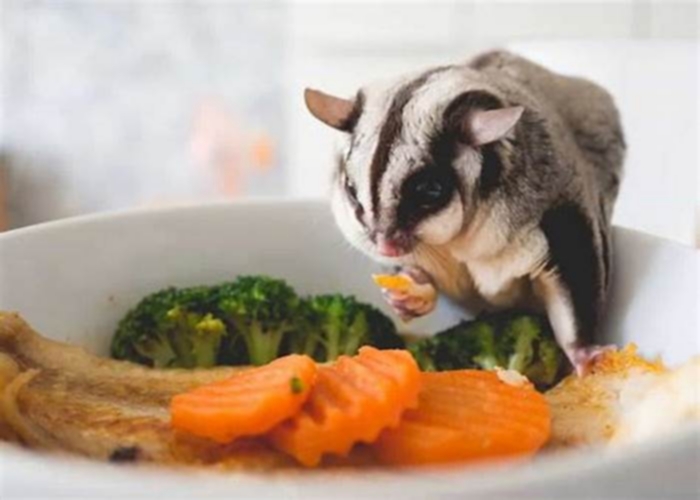What do you put in a sugar glider cage
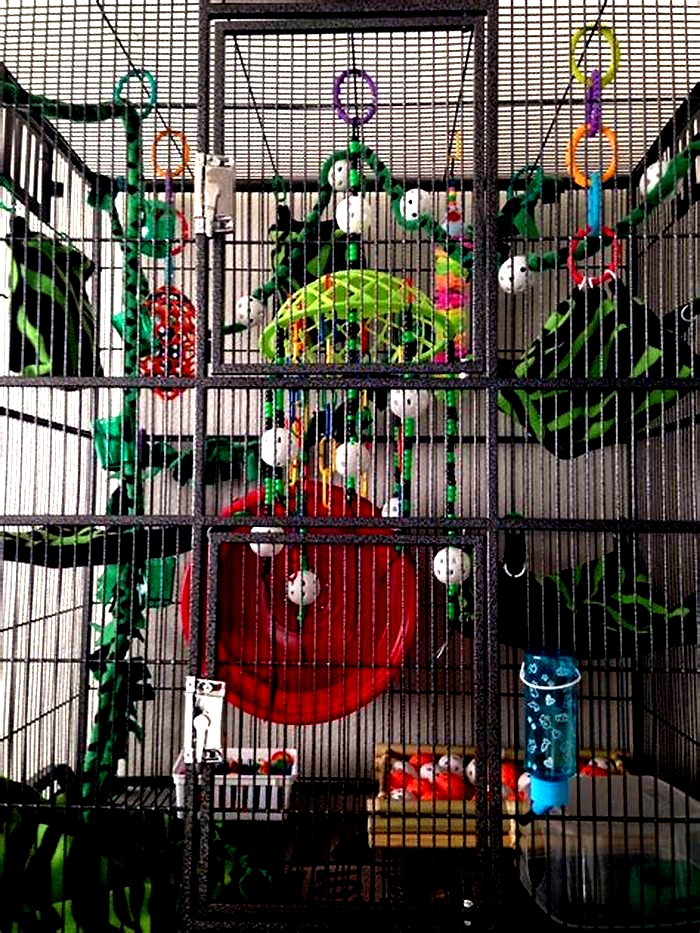
A Complete Guide to Cages for Sugar Gliders: Size, Safety, and More
If you are considering getting a sugar glider as a pet, there is a lot to think about. In addition to providing them with proper diet and nutrition, it is also important to provide them with the right kind of cage.
Cages are a crucial factor in providing these animals with the right environment to thrive. Not only do they give a space of safety and comfort, but the size and shape of your sugar glider cage also helps to ensure that he gets the right amount of exercise, stimulation and mental health.
In this guide, we will discuss everything you need to know about cages for sugar gliders, including size, safety and other considerations. Read on to learn more!
Cage Requirements
When it comes to cages for sugar gliders, size is one of the most important factors to consider. A minimum cage size of 2 feet wide, 2 feet deep, and 2 feet tall is recommended for one or two sugar gliders. This will give them enough space to move around, play, and exercise.
The larger the cage, the better, because sugar gliders like to have plenty of room to explore and be active.
Types of cages
When choosing a sugar glider cage, you must know that there are several types of cages to choose from, including metal, acrylic, and wooden cages. All types come with their own advantages and disadvantages, so be sure to do your research before making a decision.
In short, you can take into consideration the following:
- Metal cages: strong, durable and easy to clean
- Acrylic cages: clear view, lightweight but more expensive
- Wooden cages: natural-looking but require more maintenance
One thing that some people may not know about sugar glider cages is that they require a lot of vertical space. This is because sugar gliders are arboreal animals, which means they are adapted to living in trees. In the wild, they would spend most of their time climbing, jumping and gliding from tree to tree, so its important to provide them with a cage that allows them to do the same.
Some people might think that a horizontal cage is enough, but sugar gliders need to have the opportunity to climb and jump. A cage with multiple levels and a variety of perches and branches that are placed at different heights and angles will provide them with the opportunity to engage in natural behaviors and will promote their physical and mental well-being.
Bar spacing and thickness are also factors to consider when looking after cages for sugar gliders. The bars should be spaced no more than 1/2 inch apart, to prevent your pet from escaping or getting their head stuck. The bars should also be thick enough to prevent bending or breaking.
Remember that, even with all the right requirements, your sugar glider will still need plenty of time outside their cage to play, socialize and fly.
Perches and toys
Perches and toys are an essential part of a sugar gliders cage. These items provide them with a place to rest and play, which helps for their physical and mental well-being. When choosing perches and toys for your sugar glider, keep in mind the following:
- Perches should be made of natural materials such as wood or branches, as sugar gliders like to gnaw and chew on them.
- Toys should be made of durable materials and be able to withstand the wear and tear of a sugar gliders playful nature.
- Variety is important, provide different types of perches and toys for mental stimulation and environmental enrichment.
We think that the sugar glider toys should be rotated regularly to keep them mentally stimulated. Keeping the same toys in the cage for long periods of time can cause sugar gliders to lose interest, and they will not engage with them as much. Rotating toys on a regular basis will prevent your little pet from getting bored.
Safety Considerations
Safety should always be a top priority when it comes to caring for your sugar glider. When setting up their cage, we recommend keeping the following safety considerations in mind:
- Make sure the cage is escape-proof, with bar spacing no more than 1/2 inch apart.
- Check for any sharp edges or corners that could harm your sugar glider.
- Avoid using any toxic materials in or near the cage, as sugar gliders are sensitive to chemicals and can easily ingest them.
- Place the cage in a safe location away from direct sunlight, drafts, and other sources of stress.
Setting up the Cage
- Placement of cage in home
- Bedding and lining options
- Accessorizing the cage (e.g. food dishes, water bottle, hideaways)
- Adding a play area or flying space
Setting up the perfect cage for your sugar glider may seem like a lot of work, but trust us, its worth it. These little guys are so loving and affectionate, and youll be the best pet parent ever with a cozy, safe, and entertaining cage for them.
Placement of Cage in Home
The placement of the cage in your home is just as important as the cage itself! After all, where you put their little abode can make a big difference in their overall well-being and happiness.
First and foremost, youll want to pick a spot thats safe for them. Were talking away from windows and doors where drafts can sweep in and play havoc with their delicate little bodies. And speaking of temperature, its important to keep their cage away from direct sunlight as well. Imagine being stuck in a hot, stuffy room all day not too pleasant, right? So, keep their cage in a well-ventilated area with a comfortable temperature.
Another thing to keep in mind is the noise level of the area you choose. Sugar gliders are sensitive little creatures and can be easily stressed out by loud noises. So, its best to avoid placing their cage in a room where theres a lot of foot traffic or close to a TV or stereo. You want their little home to be a peaceful haven for them to relax and play in.
Of course, you also want to think about your own convenience. Sugar gliders are nocturnal animals, so keep in mind that they may play all night and make a lot of noise! Thats why its a good idea to place their cage in an area where the sound wont bother you.
Bedding and Lining Options
The bedding is an important element in keeping your sugar glider comfortable and healthy. Choose a bedding material that is not overly scented, non-toxic, and easy to clean.
Here is a list of safe bedding and lining options to consider:
- The bedding and lining of your sugar gliders cage should be soft, comfortable and easy to clean.
- Options include: paper bedding, fleece, or washable liners.
- Be sure to use non-toxic and hypoallergenic materials.
- Avoid using materials that can be easily ingested such as wood shavings or cedar chips.
Cage accessories
When it comes to accessorizing your sugar gliders cage, there are a few essential items that youll need to include. These items will not only provide your pet with the necessities they need, but they will also make their environment more comfortable and interesting.
- Food Dishes: Your sugar glider will need a place to eat, so be sure to include a couple of food dishes in their cage. These can be made of metal, ceramic or plastic. Be sure to choose dishes that can be easily cleaned, and that your glider cannot chew or tip over.
- Water Bottle: A water bottle is essential for your sugar gliders hydration. Choose a water bottle that attaches to the side of the cage and that has a ball bearing sipper, this type of sipper will prevent leaks and spills.
- Hideaways: Sugar gliders are social animals, but they also need a place to retreat and feel safe. Include hiding spots such as hammocks, tents, or small houses. These can be made of fabric, plastic or wood.
- Additional Accessories: you can also add accessories such as ropes or ladders to help your sugar glider climb and glide around the cage, or puzzle feeders to provide mental stimulation.
Cleaning and Maintenance
Okay, lets talk about something that can be a bit of a pain, but its super important cleaning and maintaining your sugar gliders cage. I know, its not the most glamorous topic, but its crucial for your little pets health and well-being.
As a general rule of thumb, you should be doing a deep cleaning at least once a week. This means taking everything out of the cage, giving it a good scrub down, and then putting it all back together again. This is also a good time to inspect the cage for any signs of damage or wear and tear.
Now, what should you be cleaning? Basically, everything. That means the bedding, food dishes, and of course, the cage itself. Youll want to use a mild, non-toxic cleaner, like a vinegar and water solution. Avoid using harsh chemicals or abrasive scrubbers, as sugar gliders are sensitive to chemicals and can easily ingest them.
In addition to deep cleaning, its also important to do daily spot cleaning. This means removing any food or water dishes that need to be refilled, and disposing of any droppings or uneaten food.
You also need to do regular cage inspections to ensure that the cage is in good condition and that all the accessories are still in good working order. This also allows you to spot potential issues before they become bigger problems, like loose wires, bent perches, or broken toys.
Conclusion
Owning a sugar glider is an incredibly rewarding experience, but it comes with a lot of responsibility. The key to keeping them healthy and happy is providing a safe, comfortable and clean environment.
This means choosing the right cage, bedding, and accessories as well as regularly cleaning and maintaining their cage. With the right care and attention, your sugar glider will be a happy and healthy pet for years to come.
How to Set Up Your Sugar Glider Cage (Fast and Easy)
How to Set Up Your Sugar Glider Cage (Fast and Easy)
Affiliate DisclaimerAs an affiliate, we earn from qualifying purchases. We get commissions for purchases made through links on this website.
If youre like most people, you probably dont have a lot of time to spend setting up your sugar glider cage. Fortunately, there are a few simple things you can do to make the process go much faster and easier.
First, its important to choose the right size cage for your sugar glider. If you get a cage thats too small, your sugar glider will feel cramped and uncomfortable. The best cage size for a sugar glider is 24 x 24 x 36 inches, and bigger if you have more gliders. After choosing the cage, you need to think of a room where to put the cage. The location of the cage is important because sugar gliders are very social animals, and they need to be in an area where they can see and interact with you and other family members.
Once you have the cage and location picked out, its time to provide the necessary accessories and the right bedding. In this article, we go in-depth on how to set up your sugar glider cage fast and easy.
Choosing the right cage
Choosing the right cage for your sugar glider is important. You want a cage that is big enough for them to move around and stretch their arms and legs, but not so big that they feel lost in it. The cage should also be tall enough for them to climb, as sugar gliders love to climb. A good rule of thumb is to choose a cage that is 24 x 24 x 36 inches.
One popular type of cage for sugar gliders is the vertical cage. These cages are tall and narrow, giving your sugar glider plenty of space to climb. They also come with a variety of accessories, such as hammocks and ladders, to keep your sugar glider entertained.
Keep in mind that, the more sugar gliders you have, the bigger cage you will need.
Another option is the horizontal cage. These cages are shorter and wider, giving your sugar glider more floor space to move around. Horizontal cages are a good choice if you plan on keeping more than one sugar glider, as they will have more room to socialize.
No matter which type of cage you choose, be sure to pick one that is made from sturdy materials and has a securely fastened door. You dont want your sugar glider escaping from their cage!
How wide should bars be on a sugar glider cage?
The bars on a sugar glider cage should be no more than 1/2 inch apart. This is to prevent your sugar glider from escape.
Setting up the perfect environment
Your sugar gliders cage should be kept in a quiet room in your house where there is not a lot of foot traffic. Sugar gliders are nocturnal animals, so they will be most active at night. For this reason, you may want to keep their cage in your bedroom, so you can bond with them while they are awake.
The temperature in the room where the cage is kept should be between 65 and 75 degrees Fahrenheit. Sugar gliders are native to Australia and Indonesia, so they are used to warm temperatures.
Your sugar gliders cage should also be placed away from any drafty windows or doors. The cage should be covered with a light-blocking cloth to create a feeling of nighttime. This will help your sugar glider feel more comfortable and relaxed.
Should I cover my sugar gliders cage at night?
It is a good idea to cover your sugar gliders cage at night. This will help them feel more secure and relaxed. It will also help to muffle any noise from outside the cage, so your sugar glider can sleep peacefully.
Providing the necessary accessories
In addition to a comfortable cage, your sugar glider will need some essential accessories. These include:
- A water bottle: Sugar gliders need to drink water, so be sure to put a water bottle in their cage.
- A food bowl: This is where you will put your sugar gliders food.
- Toys: Sugar gliders love to play, so be sure to include some toys in their cage. Popular options include ladders, hammocks, and swings. You can also choose from our list of toys ideas.
- A nest box: This is where your sugar glider will sleep. Sugar gliders are social animals, so its a good idea to get a nest box that is big enough for two or more sugar gliders.
You can find all of these accessories at your local pet store.
Pick the right bedding for your sugar gliders
The bedding you choose for your sugar gliders cage is important. You want a material that is soft, absorbent, and non-toxic. Popular choices for sugar glider bedding include:
- Carefresh: This bedding is made from recycled paper and is soft, absorbent, and dust-free.
- Kaytee Clean & Cozy: This bedding is made from recycled paper and is infused with a vanilla scent to help control odor.
- Aspen shavings: These are a good choice for sugar gliders who like to burrow. Be sure to avoid pine and cedar shavings, as these can be harmful to your sugar glider.
You will also need a litter box for your sugar gliders cage. A small plastic box with high sides works well. Be sure to choose a litter that is soft and absorbent, such as Carefresh.
Once you have all of the necessary accessories, you are ready to set up your sugar gliders cage!
Maintaining the cleanliness of the cage
It is important to keep your sugar gliders cage clean. A dirty cage can lead to health problems for your sugar glider.
You should spot clean the cage every day, and do a deep clean once a week. To deep clean the cage, remove all of the bedding and accessories. Wash everything with hot water and soap. Rinse everything thoroughly and let it air dry before putting it back in the cage.
In between deep cleanings, you can use a pet-safe cleaner to clean the cage. Be sure to follow the instructions on the cleaner to avoid harming your sugar glider.
You should also change the water in your sugar gliders water bottle every day.
By following these tips, you can help keep your sugar gliders cage clean and tidy.
Conclusion
Setting up a sugar glider cage is easy if you know what you need. You will need a cage, bedding, a water bottle, a food bowl, toys, and a nest box. You should also cover the cage at night to help your sugar glider feel more secure.
It is important to keep the cage clean, so be sure to spot clean every day and do a deep clean once a week. With these tips, you can easily set up a comfortable and safe cage for your sugar glider.

